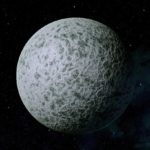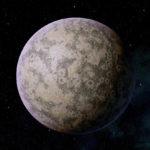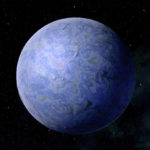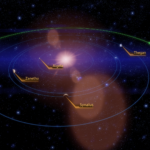System Specs:
- Stellar Mass: 0.98 Sol Masses
- Stellar Class: G
- Luminosity: N/A Sol
- Planets: 4
- Moons: 0
- Asteroid Belts: 0
- Asteroids: 0
- Objects: 0
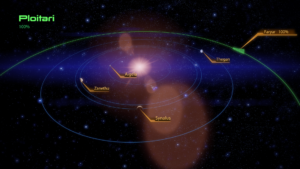
–
Planets Directory:
- Aigela
- Zanethu
- Synalus
- Thegan
–
Aigela:
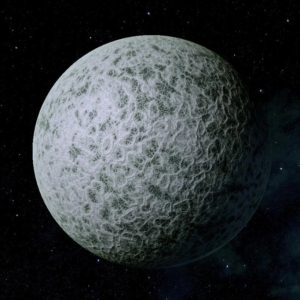
- Orbital Distance: 0.7 AU
- Orbital Period: 0.6 Earth-years
- Keplerian Ratio: 0.953
- Radius: 1,511 km
- Day Length: 19.3 Earth-hours
- Atmospheric Pressure: 0.03 atm
- Surface Temp: 125 °C
- Surface Gravity: 0.1 g
- Mass: 0.006 Earth-masses
Only known from scan data picked up by space probes, Aigela is currently classified as a dwarf planet. A warm barren rock, its thin atmosphere is composed of carbon dioxide and oxygen. Significant alumina deposits in its crust make its density and gravity very low indeed.
–
Zanethu:
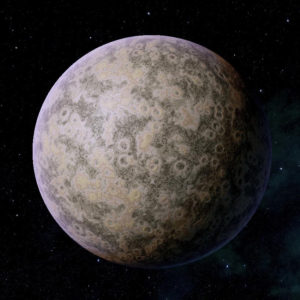
- Orbital Distance: 1.9 AU
- Orbital Period: 2.6 Earth-years
- Keplerian Ratio: 1.015
- Radius: 6,619 km
- Day Length: 53.6 Earth-hours
- Atmospheric Pressure: 0.38 atm
- Surface Temp: −16 °C
- Surface Gravity: 1.2 g
- Mass: 1.283 Earth-masses
Believed to be a post-garden world, Zanethu has large deposits of calcium carbonate in its sedimentary rocks, indicating it may have once had plate tectonics and even plant life. Its swirling clouds of dust and snow may have occurred more recently and blocked the sun, creating a mass extinction event. Its surface gravity is comfortable and its temperature tolerable by most sapient species.
–
Synalus:
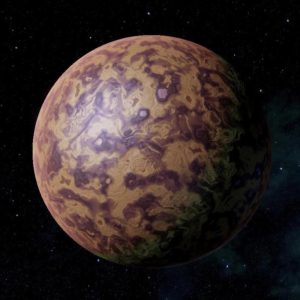
- Orbital Distance: 2.2 AU
- Orbital Period: 3.3 Earth-years
- Keplerian Ratio: 0.978
- Radius: 5,391 km
- Day Length: 66.8 Earth-hours
- Atmospheric Pressure: 1.23 atm
- Surface Temp: −3 °C
- Surface Gravity: 0.84 g
- Mass: 0.596 Earth-masses
Space probes indicate that Synalus is nowhere near as hospitable as its neighbor, Zanethu. Synalus’s hydrogen-argon atmosphere is thought to be anathema to life, but the presence of borax on the surface, spawned by a boron-heavy core, indicates the planet may once have had water.
–
Thegan:

- Orbital Distance: 4.1 AU
- Orbital Period: 8.3 Earth-years
- Keplerian Ratio: 1
- Radius: 3,581 km
- Day Length: 28.5 Earth-hours
- Atmospheric Pressure: 0.05 atm
- Surface Temp: −116 °C
- Surface Gravity: 0.56 g
- Mass: 0.175 Earth-masses
Thegan rounds out the trio of planets scouted only by space probe in this backwater solar system. A frozen ball with significant amounts of tin in its crust, Thegan has a fractional atmosphere with trace amounts of carbon dioxide and carbon monoxide. Strange radiation emissions have been charted coming off of Thegan, but it is unknown if these are from radioactive elements or merely a star’s radiation reflected by a high-albedo surface.
–
–
video

